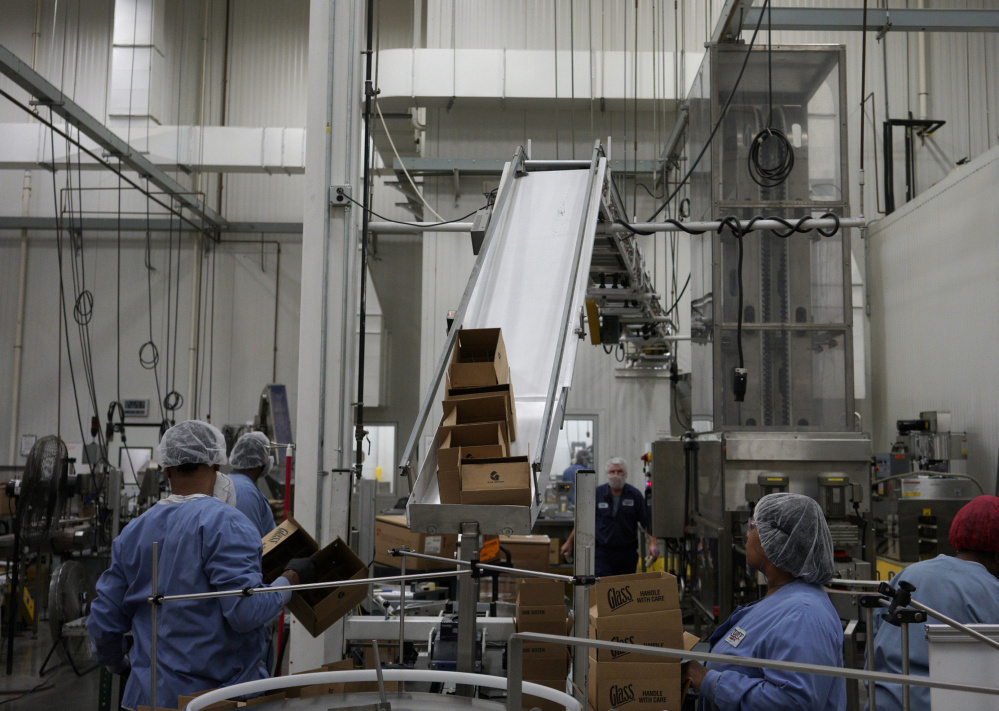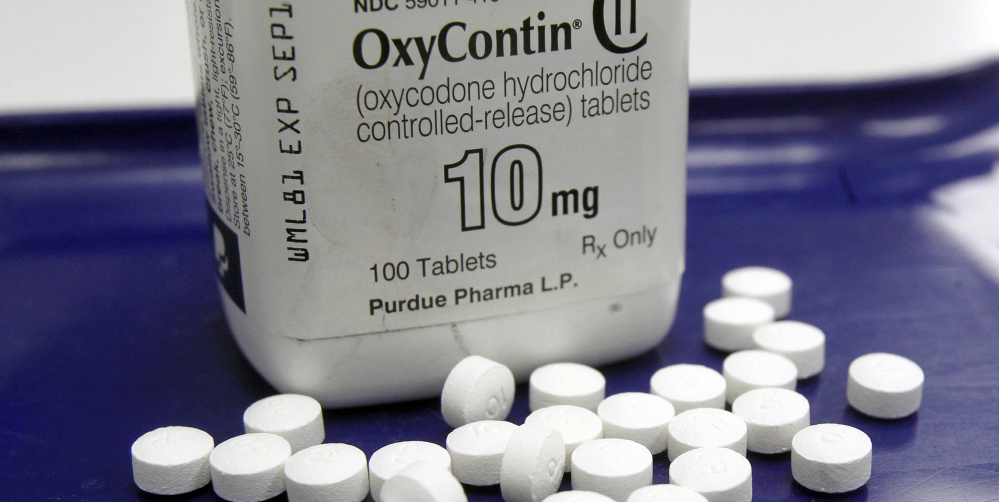At Philip Tulkoff’s food-processing plant in Baltimore, machines grind tough horseradish roots into puree. “If you put your arm in the wrong place,” the owner says, “and you’re not paying attention, it’s going to pull you in.” It’s not a good place to be intoxicated.
Drug abuse in the workforce is a growing challenge for American business. While economists have paid more attention to the opioid epidemic’s role in keeping people out of work, about two-thirds of those who report misusing pain-relievers are on the payroll. In the factory or office, such employees can be a drag on productivity, one of the U.S. economy’s sore spots. In the worst case, they can endanger themselves and their colleagues.
That’s why Tulkoff practices zero tolerance. One randomly chosen employee gets tested every month, “and we’re gonna move it to two.” The costs mount up: He has to hire a third-party company to select the worker, and pay the clinic to conduct tests. Money is wasted training workers who subsequently drop out when they fail the screening.
Then there are the added care costs. Castlight Health, a benefits platform, estimates that opioid abusers cost employers nearly twice as much in health care expenses as their clean co-workers – an extra $8,600 a year.
It’s no wonder that not every boss is as rigorous as Tulkoff. “I know people who’ve said, ‘I can’t do it, I would lose too many people,’ ” he says.
At the moment, 57 percent of employers say they perform drug tests, according to the National Safety Council. Out of those, more than 40 percent don’t screen for synthetic opioids like oxycodone – among the most widely abused narcotics and one of the substances that new federal rules are targeting.
Starting next month, many federal government employees who take drug tests will have to submit to a more extensive screening – one response to a spiraling crisis. Opioids killed about 33,000 Americans in 2015, more than any other year on record. Private companies aren’t obliged to follow Washington’s lead, but in such areas they often do.
Factories, with their heavy machinery, are where drug-abusing workers can do the most immediate harm to themselves and their colleagues. Even there, employers are tempted to look the other way, according to Mike Galiazzo, president of the Regional Manufacturing Institute of Maryland.
“I have heard manufacturers over the years say, ‘We wish we didn’t have to test for drugs,’ because they lose money when they can’t fill those positions,” he said.
Hiring is becoming tougher in any case. While the economy has steadily added jobs since the financial crisis ended, the available pool of workers hasn’t expanded to match. The share of working-age Americans in the labor market is stuck at about 63 percent, down more than 4 percentage points since 2000 – the same period in which the opioid epidemic took off. There’s an “extreme shortage of skilled workers,” Galiazzo says.
Drugs are probably at least partly to blame for that, too. There’s a growing consensus among economists that opioid abuse has contributed to the shrinking workforce. Fed chair Janet Yellen has flagged the issue. Princeton’s Alan Krueger estimates that drugs may account for one-fifth of the drop among men.
For businesses, the labor squeeze plus the opioid crisis are making it especially hard to expand quickly when they get new orders, says Drew Greenblatt, owner and president of Marlin Steel Wire Products in Baltimore, which makes industrial-strength metal baskets used in factories. “We just nailed a huge job and we need to hire three people,” he said. “We’re banging our heads against the wall.”
And there’s no guarantee that new hires will stick around. Drug problems are accelerating the turnover among staff.
“In the last three weeks, we’ve had six people come, get trained, and then are no-call, no-shows,” Greenblatt said. He said the biggest loss comes from taking high-performing employees out of the production process so they can train new hires. “That person is diverted into the completely unproductive task of teaching someone who’s going to leave in a day or two.”
Productivity growth in the U.S. economy has been slowing for decades. There’s little consensus about the causes. But there are signs that the spread of drug abuse could be contributing to the problem.
The National Safety Council survey found that 29 percent of employers reported impaired job performance due to prescription painkiller use, while 15 percent cited an injury or near miss that they attributed to the drugs. As many as 70 percent said their workforce had been affected in some way.
Send questions/comments to the editors.




Success. Please wait for the page to reload. If the page does not reload within 5 seconds, please refresh the page.
Enter your email and password to access comments.
Hi, to comment on stories you must . This profile is in addition to your subscription and website login.
Already have a commenting profile? .
Invalid username/password.
Please check your email to confirm and complete your registration.
Only subscribers are eligible to post comments. Please subscribe or login first for digital access. Here’s why.
Use the form below to reset your password. When you've submitted your account email, we will send an email with a reset code.